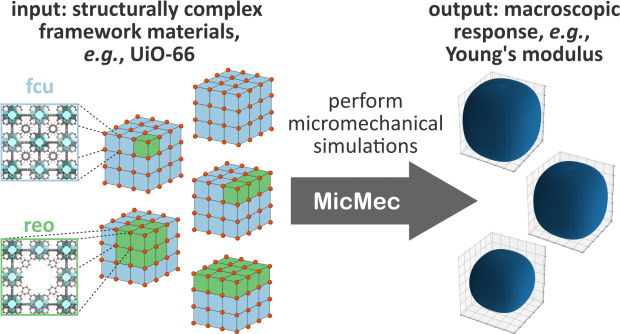Water motifs in zirconium metal-organic frameworks induced by nanoconfinement and hydrophilic adsorption sites
Abstract
The intricate hydrogen-bonded network of water gives rise to various structures with anomalous properties at different thermodynamic conditions. Nanoconfinement can further modify the water structure and properties, and induce specific water motifs, which are instrumental for technological applications such as atmospheric water harvesting. However, so far, a causal relationship between nanoconfinement and the presence of specific hydrophilic adsorption sites is lacking, hampering the further design of nanostructured materials for water templating. Therefore, this work investigates the organisation of water in zirconium-based metal-organic frameworks (MOFs) with varying topologies, pore sizes, and chemical composition, to extract design rules to shape water. The highly tuneable pores and hydrophilicity of MOFs makes them ideally suited for this purpose. We find that small nanopores favour orderly water clusters that nucleate at hydrophilic adsorption sites. Favourably positioning the secondary adsorption sites, hydrogen-bonded to the primary adsorption sites, allows larger clusters to form at moderate adsorption conditions. To disentangle the importance of nanoconfinement and hydrophilic nucleation sites in this process, we introduce an analytical model with precise control of the adsorption sites. This sheds a new light on design parameters to induce specific water clusters and hydrogen-bonded networks, thus rationalising the application space of water in nanoconfinement.

 Open Access version available at
Open Access version available at 